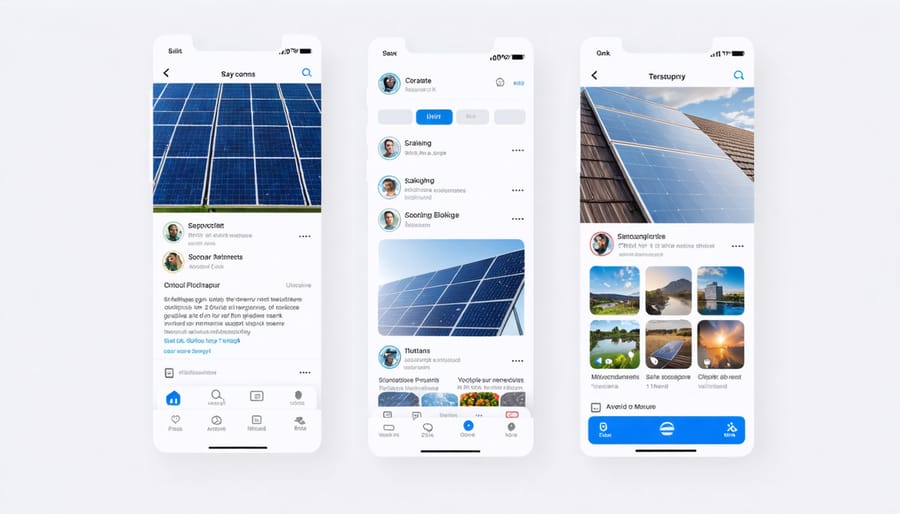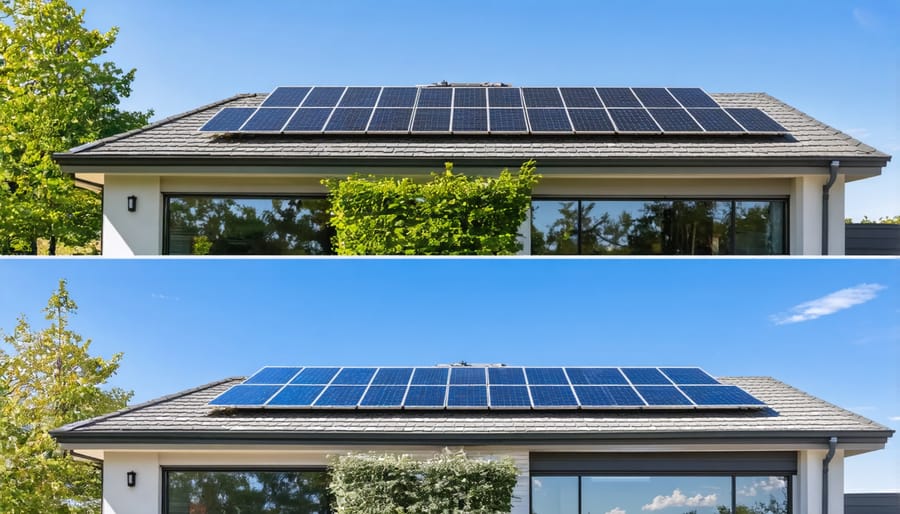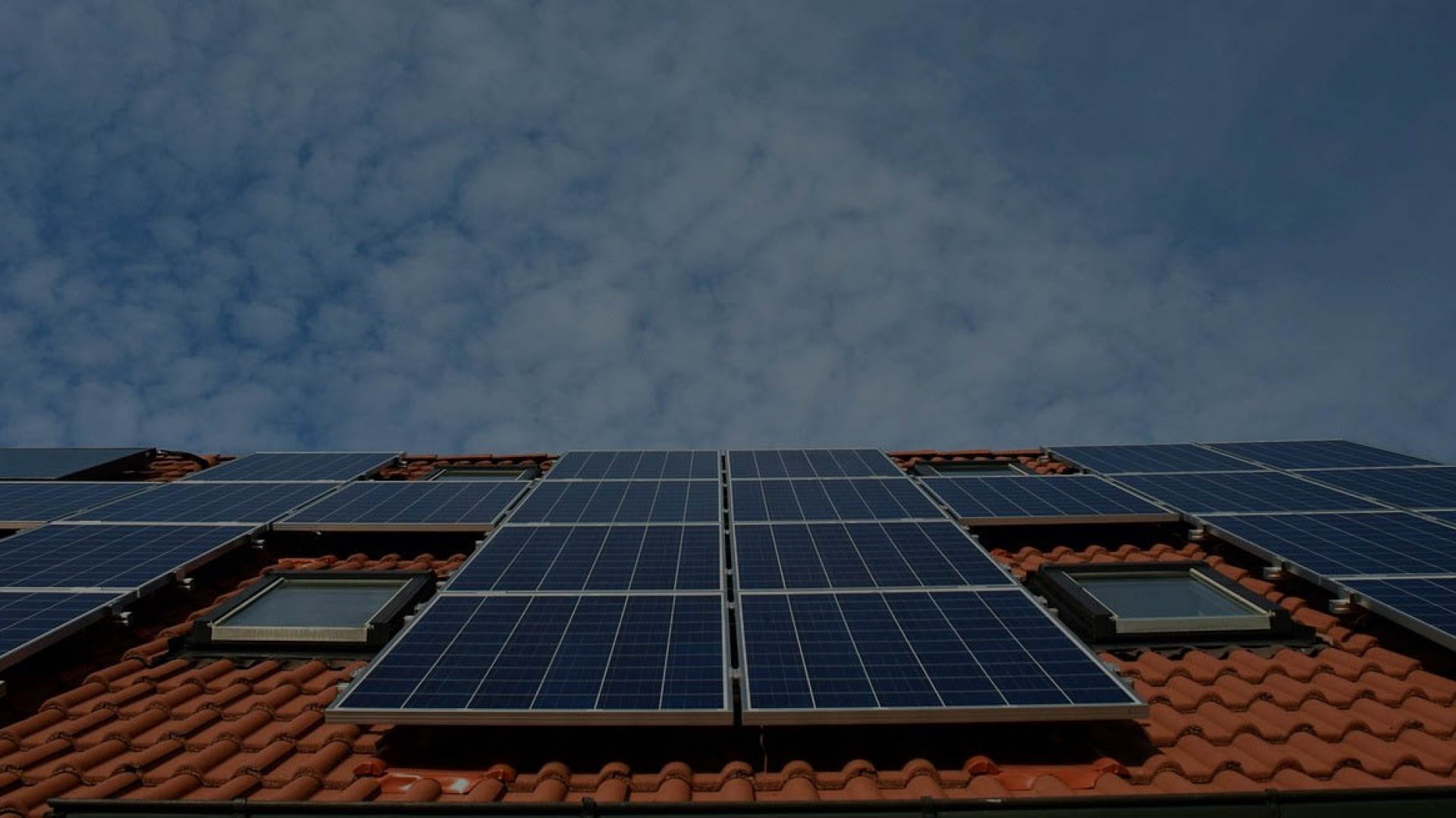Transform your solar energy brand’s social media presence by crafting visual stories that showcase real-world installations through compelling before-and-after photos. Using this service to analyze engagement metrics, develop targeted content that educates followers about solar technology’s immediate financial benefits and environmental impact.
Solar energy’s visual nature presents unique opportunities across social platforms. Share time-lapse videos of installations, create infographics displaying energy savings data, and leverage user-generated content from satisfied customers to build authentic social proof. These elements resonate particularly well on Instagram and LinkedIn, where decision-makers actively seek sustainable solutions.
Engage your audience by highlighting the human side of solar adoption. Feature stories of homeowners and businesses achieving energy independence, local job creation in the renewable sector, and community solar projects making clean energy accessible to everyone. This narrative-driven approach, combined with educational content about tax incentives and technological innovations, positions your brand as both an industry authority and a trusted community partner.
Remember, successful social media strategies in the solar sector require a delicate balance between technical expertise and relatable content that speaks to both environmental and economic benefits.
Building Your Solar Brand’s Social Media Foundation

Platform Selection and Audience Mapping
Each social media platform offers unique opportunities to connect with potential solar energy customers, making strategic platform selection crucial for success. LinkedIn proves invaluable for reaching business decision-makers and facility managers interested in commercial solar installations, while Instagram’s visual nature makes it perfect for showcasing stunning solar installations and before-and-after transformations.
Facebook remains essential for targeting homeowners aged 35-65, particularly through community groups and local targeting. This platform excels at sharing educational content and customer testimonials. For younger, environmentally conscious audiences, TikTok and Instagram Reels offer opportunities to create engaging, short-form content explaining solar benefits and installation processes.
When mapping your audience, consider their primary motivations: cost savings, environmental impact, or energy independence. Pinterest works well for reaching home improvement enthusiasts and those planning long-term investments, while Twitter serves as an excellent platform for sharing industry news and engaging with solar advocates and policy makers.
Remember to focus your resources on platforms where your target audience is most active rather than trying to maintain a presence everywhere. Track engagement metrics to refine your platform strategy over time.
Creating Your Content Calendar
A well-structured content calendar is essential for maintaining consistent and engaging social media presence in the solar energy space. Start by mapping out key industry events, solar awareness days, and seasonal topics that affect solar energy adoption. For example, plan content around Earth Day, Energy Awareness Month in October, and peak summer months when solar performance is at its highest.
Organize your content into themed categories: educational posts about solar technology, installation success stories, energy-saving tips, and environmental impact statistics. Aim to maintain a balanced mix, with 40% educational content, 30% customer testimonials, 20% industry news, and 10% promotional material.
Create a monthly planning document that includes post types, optimal posting times, and platform-specific requirements. For instance, schedule longer educational content for LinkedIn during business hours, while sharing quick tips and visual content on Instagram during evening peak usage times.
Remember to leave room for spontaneous content like weather-related posts or breaking industry news. Keep a bank of evergreen content ready for days when immediate content creation isn’t possible.
Content Strategies That Spark Interest
Before-and-After Transformations
Visual storytelling transforms solar energy from a complex technology into a relatable home improvement journey. The Johnson family’s Victorian home renovation garnered over 10,000 Instagram likes when they shared their dramatic before-and-after transformation, showcasing both their sleek new solar array and their reduced energy bills – from $400 to just $50 monthly.
Local business owner Sarah Chen’s time-lapse video series of her café’s solar installation reached 50,000 views on LinkedIn, inspiring five neighboring businesses to make the switch. Her posts highlighted not just the installation process but also tracked the café’s growing savings and reduced carbon footprint over six months.
Desert Sun Solutions’ Facebook campaign featuring aerial drone footage of large-scale installations earned tremendous engagement. Their most successful post paired a stark “before” image of a sun-beaten warehouse roof with an “after” shot showing a stunning solar array, complete with real-time energy production metrics.
These success stories demonstrate how compelling visual content can showcase both the aesthetic and practical benefits of solar adoption, making the technology more accessible and appealing to potential customers.

Educational Content That Converts
Educational content on social media should address the questions your audience is already asking. Start by creating easy-to-understand explainers about types of solar panels and how they work. Use infographics to break down complex concepts into digestible pieces, and create short video tutorials demonstrating solar installation processes.
Address common concerns by developing content around solar panel costs and savings, featuring real customer testimonials and case studies. Share weekly energy-saving tips, seasonal maintenance guides, and myth-busting posts that clarify misconceptions about solar energy.
Create engaging carousel posts showing before-and-after installations, and use Instagram Stories to showcase “day-in-the-life” content of your installation team. Develop Q&A series addressing frequently asked questions about warranties, installation timelines, and utility bill impacts.
Remember to keep content relatable by using everyday examples and clear comparisons. For instance, explain energy savings in terms of familiar household expenses or demonstrate environmental impact through easily understood metrics like “trees saved” or “cars off the road.”
Video Content for Solar Success
Video content reigns supreme on social media, and solar companies can leverage this format to create compelling stories about their installations and successes. Start by creating before-and-after transformation videos showcasing completed projects, highlighting both the aesthetic appeal and energy savings. Time-lapse installation videos are particularly engaging, demonstrating the efficiency of your team while demystifying the process for potential customers.
Consider creating short, educational clips explaining key concepts like solar panel maintenance and energy production. These bite-sized videos perform well on platforms like Instagram Reels and TikTok, where viewers seek quick, informative content. Feature satisfied customers sharing their experiences through video testimonials, focusing on tangible benefits like reduced electricity bills and environmental impact.
Live videos can be particularly effective for Q&A sessions with solar experts, virtual consultations, or showcasing new technology demonstrations. Remember to optimize your videos with captions, as many users watch without sound, and include clear calls-to-action that direct viewers to learn more about your solar solutions.
User-Generated Content Strategies
User-generated content serves as powerful social proof in the solar energy industry. Encourage satisfied customers to share their solar journey by creating dedicated hashtags like #MySolarStory or #SolarSuccess. These authentic experiences resonate deeply with potential customers who want to hear from real people about their transition to solar energy.
Set up a simple system for collecting testimonials, such as sending follow-up emails to customers after installation, requesting before-and-after photos of their solar installations, or creating polls about energy savings. Feature these stories across your social platforms, highlighting specific benefits like reduced electricity bills or increased home value.
Create engaging campaigns that motivate customers to share their experiences. Consider monthly contests where followers share their solar energy savings or innovative ways they’re using their solar power. Video testimonials are particularly effective, showing real homeowners explaining their decision-making process and the benefits they’ve experienced since going solar.
Remember to always obtain proper permissions and encourage customers to share both the successes and learning experiences of their solar journey, maintaining authenticity in your content strategy.
Engagement Tactics for Solar Businesses
Community Management Best Practices
Building a thriving solar energy community on social media requires consistent engagement and genuine interaction. Start by establishing a response protocol – aim to reply to comments and messages within 24 hours, maintaining a friendly yet professional tone that reflects your brand’s commitment to sustainable energy.
When addressing questions about solar installations or energy savings, provide clear, accurate information while avoiding overly technical jargon. Share success stories from satisfied customers (with their permission) to build credibility and encourage community discussion. For example, “Thanks for sharing your experience, Sarah! We’re glad to hear your solar panels are reducing your energy bills by 60%!”
Create opportunities for meaningful dialogue by asking open-ended questions about followers’ sustainability goals or energy-saving challenges. Consider hosting regular “Ask the Expert” sessions where your solar technicians or energy consultants can address common concerns and misconceptions about solar power.
Monitor conversations for common themes or questions, and use these insights to develop relevant content that addresses your community’s needs. When handling negative feedback, respond publicly with empathy and offer to continue the conversation privately to resolve any issues.
Encourage user-generated content by creating branded hashtags and featuring customer installations. This not only builds community trust but also provides authentic social proof for potential solar adopters. Remember to acknowledge and thank community members who share their solar journey, creating a welcoming environment for sustainable energy discussions.
Running Successful Solar Campaigns
To create impactful solar campaigns on social media, start by defining clear objectives that align with your audience’s interests and pain points. Whether you’re highlighting cost savings, environmental benefits, or solar panel efficiency, your campaign should tell a compelling story that resonates with potential customers.
Utilize a mix of content formats to keep your audience engaged. Share before-and-after photos of solar installations, create short videos explaining the installation process, and develop infographics showing energy savings over time. User-generated content, such as testimonials from satisfied customers, can significantly boost credibility and engagement.
Timing is crucial for solar campaigns. Launch seasonal promotions highlighting cooling benefits during summer months and energy independence during winter. Create content calendars that align with environmental awareness days and local energy initiatives to maximize reach and relevance.
Track and analyze campaign performance using platform analytics. Monitor metrics like engagement rates, click-throughs, and lead generation. Use A/B testing to optimize your message and visuals. Pay attention to which content types generate the most interest and adjust your strategy accordingly.
Remember to maintain consistency in your messaging while adapting to platform-specific best practices. What works on LinkedIn might need adjustment for Instagram or Facebook. Always include clear calls-to-action and make it easy for interested prospects to learn more or contact you.
Measuring and Optimizing Your Social Media Impact
Key Performance Indicators
To effectively measure your solar energy social media success, focus on these essential metrics. Track engagement rates, including likes, comments, and shares, to understand how well your content resonates with your audience. Pay special attention to click-through rates on posts featuring solar installations or educational content about energy savings.
Monitor follower growth rate and audience demographics to ensure you’re reaching your target market. Solar-specific metrics should include lead generation numbers from social media campaigns and conversion rates for solar consultations or installations. Website traffic from social media platforms is another crucial indicator, especially for pages about solar solutions and cost savings.
Track hashtag performance for both industry-standard tags like #solarenergy and your branded hashtags. Measure response times to customer inquiries, as quick responses build trust in the solar community. Calculate your social media ROI by comparing campaign costs against generated leads and completed installations.
Look at post timing analytics to determine when your audience is most active and receptive to solar-related content. Finally, monitor sentiment analysis to gauge public perception of your solar brand and adjust your strategy accordingly.

Adaptation and Improvement
Success in social media marketing comes from continuous refinement based on data-driven insights. Start by establishing key performance indicators (KPIs) specific to your solar energy content, such as engagement rates on educational posts, click-through rates on installation quotes, and lead generation metrics from social campaigns.
Use platform analytics tools to track which types of content resonate most with your audience. For instance, you might discover that time-lapse videos of solar installations perform better than static images, or that posts about energy savings statistics get more shares than general environmental benefits content.
Create a monthly review process to analyze your metrics. Look for patterns in posting times, content themes, and engagement levels. Pay attention to seasonal trends – you may find increased interest in solar solutions during peak electricity bill seasons or after extreme weather events.
Don’t hesitate to experiment with A/B testing different content approaches. Test various caption styles, image types, and call-to-action phrases. When you find what works, scale those successful elements while continuously testing new ideas to stay ahead of changing social media trends and audience preferences.
Remember, what works today might need adjustment tomorrow as algorithms and audience behaviors evolve. Stay flexible and responsive to your data insights.
As we’ve explored throughout this guide, social media presents incredible opportunities for promoting solar energy solutions and connecting with environmentally conscious consumers. By implementing these strategies – from creating educational content and showcasing real installations to leveraging platform-specific features and engaging with your community – you can build a strong online presence that drives sustainable growth for your solar business.
Remember that success in social media marketing requires consistency, authenticity, and a willingness to adapt. Start by choosing one or two platforms where your target audience is most active, and focus on creating valuable content that addresses their needs and concerns. Share your expertise, celebrate your customers’ success stories, and remain responsive to questions and comments.
Don’t forget to track your metrics and adjust your strategy based on what resonates with your audience. Whether you’re a solar installation company, a clean energy advocate, or a sustainable business owner, your social media presence can help demystify solar energy and inspire more people to embrace renewable solutions.
The transition to clean energy is a journey we’re all taking together, and social media gives us the perfect platform to share that journey. Start implementing these strategies today, and you’ll be well on your way to building a thriving solar energy community online while contributing to a more sustainable future.

